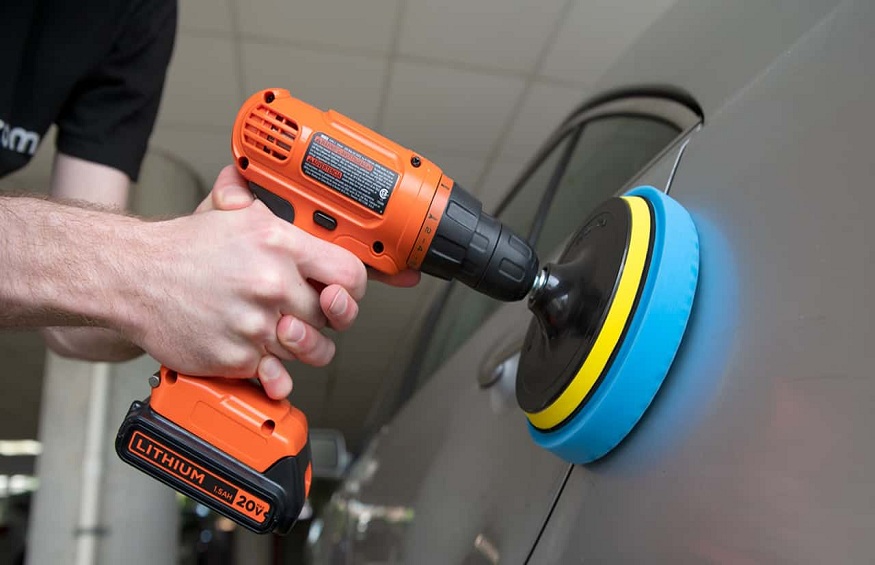Dry Polishing Pads vs Wet Polishing Pads- What’s The Difference?
In precision craftsmanship, the finishing touch is the ultimate deciding factor of a project’s quality. From marble countertops to concrete floors, the stone polishing method can significantly impact the outcome of the finished project. While plenty of polishing methods can be used in stone craftsmanship, skilled professionals tend to use the help of specific tools, like polishing pads, to refine their work. These polishing pads are available in mainly two primary types- Dry Polishing Pads & Wet Polishing Pads.
While the goal of dry and wet polishing pads are the same, their distinctive polishing methods prompt experts to pick them accordingly concerning project requirements. Today, we will discuss the significant differences between Dry Polishing Pads & Wet Polishing Pads and how to choose the more suitable one. Let’s dive right in!
Dry Polishing Pads
Dry polishing pads are made from abrasive materials that are specifically designed to work effectively without the need for water or lubrication. They often feature a Velcro backing that allows them to be easily attached to polishing machines. The abrasive material on the pad’s surface varies in grit size, which determines the level of coarseness or fineness of the polish achieved. The pads are usually used in a sequence of increasing grit sizes, starting from a coarser grit to remove imperfections and gradually progressing to finer grits to achieve a smooth and glossy finish.
Wet Polishing Pads
Wet polishing pads are designed to be used with water or other liquid-based solutions during the polishing process. The water serves several essential purposes, including cooling the pad, reducing heat buildup, lubricating the surface, and controlling dust and debris. Wet polishing pads are commonly used in various industries, including construction, architecture, and interior design, to achieve smooth and glossy finishes on surfaces like natural stone, granite, marble, concrete, and more.
Primary Differences Between Dry & Wet Polishing Pads
Usage
Dry polishing pads are chosen for polishing surfaces without water or other liquids. Their practical usage comes in dry form, so there is no need for a water source or lubrication during the polishing process.
Wet polishing pads are combined with water or other liquid-based solutions during the polishing process. The water cools the pad and the polished surface, reducing heat buildup and potential damage.
Abrasive Material
Dry polishing pads are designed with abrasive materials that effectively polish surfaces without water. These materials are engineered to generate less heat during polishing, as there is no water for cooling.
Wet polishing pads are also made with abrasive materials, but they are designed to work effectively with water, which helps with cooling lubrication and debris removal.
Heat Generation
Because dry polishing pads don’t use water, there is a higher chance of heat buildup during the polishing process. This can lead to surface damage if not appropriately managed.
Wet polishing pads generate less heat due to the presence of water, which helps dissipate heat and prevent damage to the material.
Surface Finish and Aesthetics
Choosing between dry and wet polishing pads can also influence the final aesthetics of the polished surface. Due to their potential for heat generation, dry polishing pads might yield slightly different results than their wet counterparts. With their cooling and lubricating properties, wet polishing pads can produce exceptionally smooth and uniformly polished surfaces, often achieving a higher level of gloss and luster.
Project Scale and Convenience
Dry polishing pads offer the convenience of not requiring a water source, which can be advantageous in specific scenarios, mainly when the water supply is limited or challenging to manage. They are often used for smaller projects or touch-up work. Wet polishing pads, although requiring a water feed system, are more suited for comprehensive projects due to their cooling and consistent performance over extended periods.
Shop For Polishing Pads At Tait Sales & Consulting
In crafting and perfecting surfaces, the right tools make all the difference. Whether crafting stunning stone sculptures, refining concrete masterpieces, or creating elegant spaces, choosing polishing pads is critical to achieving your goals.
Here at Tait Sales & Consulting, we get the importance of precision. Our collection of polishing pads offers a variety of options, from dry to wet, each designed for different needs. We’re committed to giving you tools you can trust to bring your projects to life, along with other stone craftsmanship tools like router bit shapes, granite saws, etc.
From the power of dry pads to the finesse of wet ones, our range suits traditional skills and modern techniques. Tait Sales & Consulting isn’t just about products – it’s about helping you achieve excellence.
As you step into the polishing world, let Tait Sales & Consulting guide you. Explore our collection, elevate your craft, and see your creations shine. Get started on your journey to brilliance – shop for polishing pads at Tait Sales & Consulting. Your attention to detail matters; we’re here to help you perfect it.

